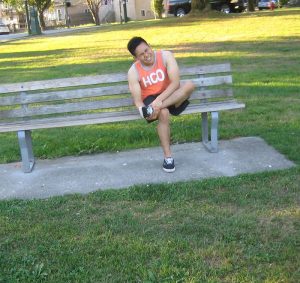Gout is a form of arthritis characterized by sudden severe pain, redness and tenderness in the joints especially the big toe. It usually last for 3-10 days followed by a pain-free period before the next episode happens.
Gout is an abnormal metabolism of uric acid that results to excess deposition in the tissues of blood. People with gout either produce excessive uric acid or their kidneys are inadequate in eliminating it.
Causes of gout
- High levels of uric acid in the blood
- Being overweight
Take plenty of rest during a gout attack. Avoid performing activities that cause pain on the affected area for fast healing of the condition. - Drinking alcohol
- Eating meat and fish with high levels of purines
- Water pills or diuretics
- Conditions such as diabetes, hypertension and kidney stones
- Genetics
- Lack of physical exercise
- Stress
Symptoms
- Severe pain and swelling of the big toe
- Severe tenderness and inflammation on the joints
- Can affect the lower-body joints such as the knee or ankle
- It usually affects one joint at a time, but if not treated properly can affect many joints
- The crystals can become kidney stones
Treatment
- Take plenty of rest during a gout attack. Avoid performing activities that cause pain on the affected area for fast healing of the condition.
- Keep the area bare especially the foot and the leg. Weight from any clothing or bedding material adds more pain to the area.
- Take the prescribed over-the-counter anti-inflammatory medications such as ibuprofen to lessen the inflammation. Avoid taking aspirin to prevent raising the level of uric acid in the blood.
- Avoid consumption of high-purine foods. Avoid organ meats such as liver and kidney, food and drinks high in fructose corn syrup as well as red meats such as lamb, beef and pork.
- Avoid excessive intake of alcohol to prevent elevating the uric acid level.
- Keep the body properly hydrated. Drinking plenty of water prevents the formation of urate crystals in the joint and lessens the risk for recurrent gout attacks. Drink at least 8-12 glasses of water every day. During an attack, drink at least 16 glasses every day to flush out the uric acid.
- Elevate the affected area using a couple of pillows and apply an ice pack for at least 20-30 minutes at a time several times every day to lessen the inflammation. Avoid placing the pack directly on the skin to prevent further damage.

